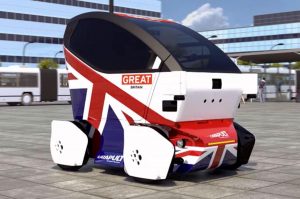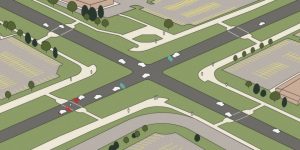When thinking about mobility throughout the Kansas City metropolitan area, one must always consider the future, especially as we lie on the cusp of an autonomous vehicle revolution. While it may be difficult to imagine a world where there are no human-controlled vehicles, it is believed that full automobile autonomy is inevitable.
When this shift happens, our built environment will take on a much different aesthetic. According to Dr. Sungyop Kim, a transportation planner at UMKC, the use of bus transit may become obsolete. Roads may be filled with smaller pod-like vehicles in lieu of buses (Kim, 2018).

In addition, traffic signs, signals, and street markings will be a thing of the past. As gasoline-powered engines disappear, so too will gas stations with bold signage that are situated on lots dominated by impervious surfaces. In fact, impervious surfaces may be reduced to negligible amounts as extra surface area to compensate human error becomes unnecessary. Landscape architects may find themselves inundated with work as we redesign our built environment to include much more greenery and landscaping.
Works cited
Kim, Sungyop. Personal Interview. UMKC campus. February, 5, 2018.